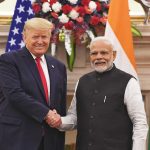
Chinese Smartphone Firms Ramp Up Indian Manufacturing
Chinese smartphone brands operating in India are rapidly increasing local production by partnering with Indian contract manufacturers such as Dixon Technologies and Bhagwati Products (Micromax). This strategic realignment comes amid growing regulatory scrutiny and a quiet push by the Indian government to localize more value addition.
Although these Chinese brands already have manufacturing facilities in India, they are now shifting larger portions of their output to Indian partners. The primary reason behind this change is to leverage government incentives under the Production-Linked Incentive (PLI) scheme and reduce exposure to regulatory probes.
This shift also allows these firms to adopt a more asset-light model by outsourcing capital-heavy infrastructure to domestic partners, giving them a strategic cushion in a politically sensitive environment.
Indian Contract Manufacturing on the Rise
The increased demand from Chinese players is proving to be a major boost for India’s contract manufacturing sector. Indian firms like Dixon Technologies are not only benefitting from larger orders but are also attracting fresh investments and expanding production capacities.
This trend strengthens the Make in India initiative by pushing foreign brands to work through Indian vendors, thereby increasing domestic value addition, creating skilled jobs, and enhancing the local supply chain ecosystem.
Contract manufacturing in India is also seen as a geopolitical hedge by Chinese firms, as it creates a buffer between their brands and the Indian state machinery. By routing production through Indian entities, these brands hope to avoid direct regulatory friction.
Regulatory Compliance Driving Business Realignment
Chinese smartphone companies have been under close scrutiny in India since 2022 over alleged financial irregularities, customs violations, and taxation issues. In response, these firms are realigning their operations to appear more compliant and India-centric.
By increasing local sourcing, production, and assembly through Indian partners, they seek to demonstrate good faith and align more closely with the Indian government’s industrial and security expectations.
As the Indian government continues to encourage higher domestic participation in the electronics manufacturing sector, this shift could become a long-term trend. It also marks a quiet but significant recalibration of business strategies by foreign tech companies trying to navigate India’s evolving regulatory and national security landscape.


















